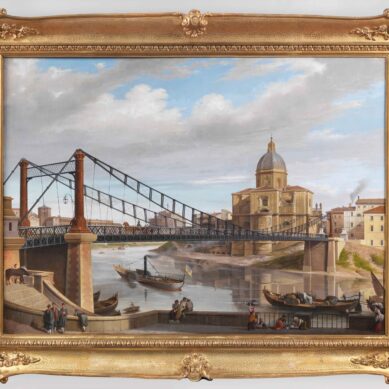You searched
Painter
Cesare Biseo
Are you interested in the sales or the purchase of his artworks?
We buy works of this artist
and of other painters and sculptors from the 16th century to the first half of the 20th century
The Berardi gallery offers a free and without obligation service for evaluation of ancient and modern art . To find your way in the art market, very complex and full of nuances, it is better to rely on a professional consultant who can answer fast and concretely to your needs. The clarity of the answers will resolve effectively the need to estimate or sell an asset.
Contact us immediately without commitment
Answers also in 24 hours:
Cesare Biseo
Cesare Biseo
Cesare Biseo was the travelling artist par excellence from the very beginning. He preferred to train under the wing of his father, the Brescian Giovanni Battista Biseo, rather than academically: as soon as he was sixteen, he followed him to Paris to collaborate on the decoration of Matilde Bonaparte’s palace. Back in Rome, he gained his first acclaim with a fresco in the Caffè dei Convertiti (Imbellone 2011, p. 108). The turning point came in 1868, however, when he was invited to Alexandria in Egypt by Chevalier Ismail Pasha, on the occasion of the opening of the Suez Canal, to work on the decoration of several institutional palaces.
He then travelled to Cairo the following year, where he was commissioned to decorate the Royal Theatre. It was a period of lively inspiration, in which he produced paintings that were to decree his commercial success and a great number of studies and impressions, which he continued to draw on in the following years to create compositions with an Orientalist flavour. Thanks to a period article, we know that the artist, shortly after his stay in Egypt, came into contact with the prestigious Goupil gallery, to which he sold An interior street in Cairo, a ‘watercolour painting’ (Roma Artistica 1872). It was precisely with a watercolour, entitled A Chorus of Nuns, that he presented himself at his first known exhibition: not the National Exhibition in Naples in 1877, as hitherto reported in the bibliography, but the Universal Exhibition in Vienna, four years earlier (Vienna 1873, p. 14, no. 2).
As his fame grew with the rise of Orientalist painting, he travelled to Morocco on an important diplomatic mission in 1875. There, too, he executed a large number of studies, some of which were purchased by the National Gallery of Modern Art in 1907. Observing, among them, the female portraits, one can see some similarities with the oil painting presented here.
In Morocco, Biseo had two exceptional travelling companions: the painter Stefano Ussi and the writer Edmondo De Amicis. His friendship with the latter led to a fruitful collaboration, which resulted in the illustrations for the volumes Morocco (1877) and Constantinople (1882 edition). When he presented himself at the ‘Esposizione di Belle Arti in Roma’ in 1883, with a single large painting, the Roman painter impressed another important writer: Gabriele D’Annunzio. ‘In Biseo’s canvas, the great vaporous light of the Orient illuminates a whiteness of cafeterias, a reddening of fezes’, the vate wrote in a review: ‘the brown faces of the women laugh in the shade of the wide yellow straw hats, voluptuous faces with moist lips, soft velvet irises’ (Andreoli 1996).
Manuel Carrera





